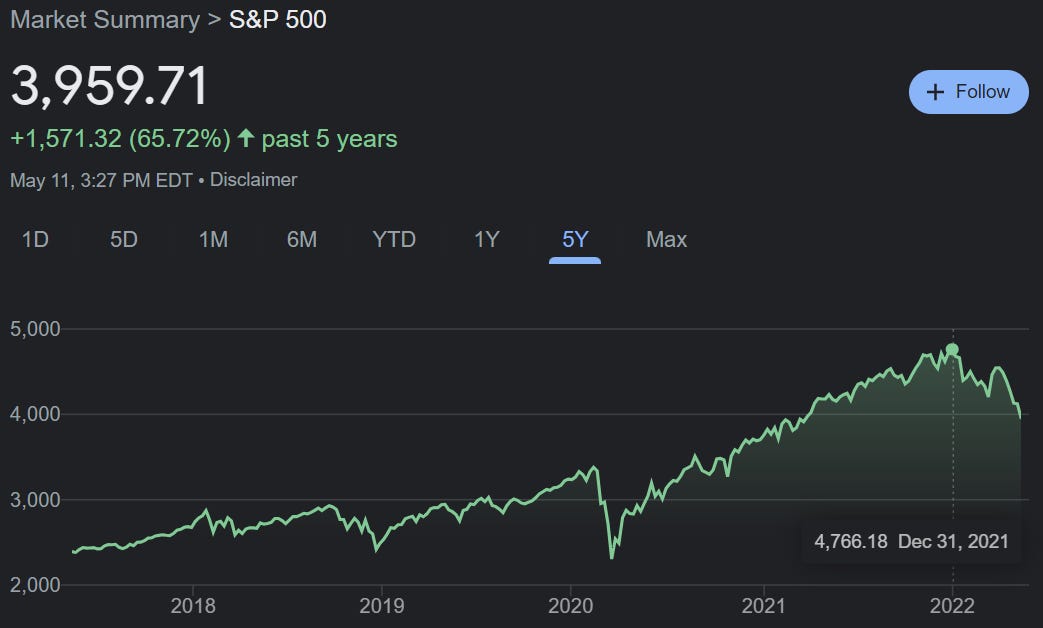The Fed isn't going to bail out your stocks this time
Why the famous "Greenspan Put" is not in effect
If you own a lot of stocks, you can’t be happy about what’s happened in the past five months or so. The S&P is down 17% from it’s peak at the new year. If you own a lot of tech stocks, you’re going to be even less happy; the NASDAQ is down 29%. And if you own a lot of what I call “medium-big” tech stocks — public companies that have valuations in the 10s or 100s of billions but fall short of the top tier — you’re going to be even less happy, with many of these companies down 50-75%. The selloff has accelerated in recent weeks; pretty much every news outlet is covering it heavily, but if you want to read some background, here’s Bloomberg, the Wall Street Journal, and NPR.
There are a ton of reasons for this stock selloff, some of which we understand fairly well (falling consumer sentiment, shrinking incomes, government spending drying up, supply chain snarls overseas, war) and some of which we don’t understand. That’s the way it usually is with these market movements. But today I want to focus on a factor that, surprisingly, I haven’t seen many people talking about — the Fed.
Pay careful attention to the timing here. The decline in stock values didn’t begin in the past few weeks; it began around the turn of the new year (and for tech, maybe a month earlier).
And the decline accelerated around the beginning of April.
So it was very interesting that in May, months after the stock decline was well underway, the Federal Reserve announced that it was going to hike interest rates by 50 basis points — the largest one-month hike in over two decades.
That’s important because it runs exactly counter to what we had learned about the Fed’s response to stock market declines over the last 30 years. People had learned to rely on the famous “Greenspan put” — the Fed’s habit of lowering interest rates whenever the stock market declined, named for former Fed chair Alan Greenspan.
(Quick primer for those who don’t know: A “put” is a term from options, it means something that limits downside risk. So the “Greenspan put” meant that whenever stocks went down, the Fed would bail them out. If the Fed predictably does this, it means the risk of holding stocks is limited, because the Fed will never let them fall too much for too long. And if the risk of holding stocks is limited, it means stocks are worth more. Hence, the Greenspan put raises the price of stocks.)
By hiking rates at an accelerating pace even as stock market declines accelerated, the Fed has called into question this basic source of long-term value for the U.S. stock market. And this gives stocks a good reason to go down even more, because if the Fed isn’t going to bail out stocks, they’re not worth as much.
So let’s talk a bit about why the Fed seemed like it was willing to always bail out stocks in the past, and why it isn’t doing that now, and what this might mean for the future.
Why would the Fed support the stock market anyway?
Keep reading with a 7-day free trial
Subscribe to Noahpinion to keep reading this post and get 7 days of free access to the full post archives.



